Those early experiences catching toads and splashing in the water transformed into a lifelong passion for nature.
This passion initially pushed him to study wildlife and fishery biology and then moved him toward visual storytelling.
At the same time, he also continues his conservation photography on land.
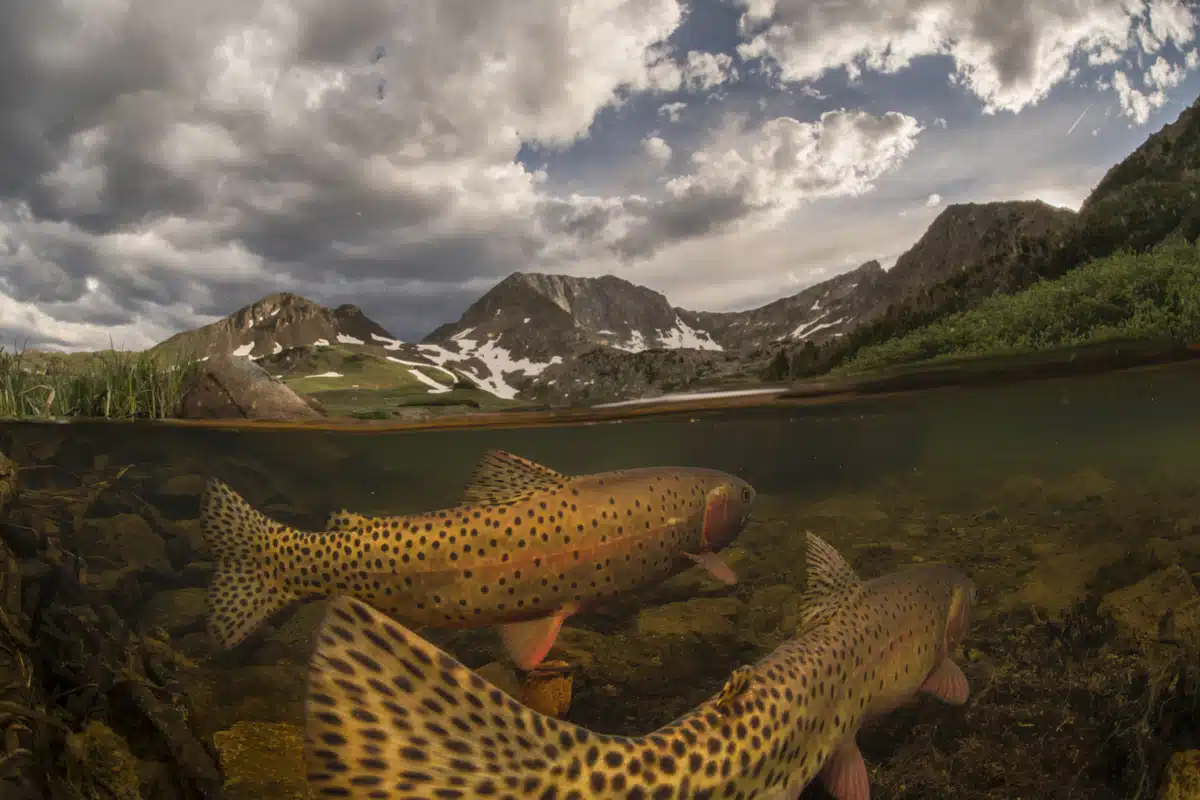
Hidden beneath the iconic peaks of Colorado’s high country a pair of Colorado River Cutthroat trout spawn in the gravels of a small lake outlet. (Photo: © David Herasimtschuk / Freshwaters Illustrated)
Read on for My Modern Met’s exclusive interview.
(Photo: David Herasimtschuk)
How did your love for environmental and wildlife photography develop?
Exploring the natural world has been a passion of mine for as long as I can remember.
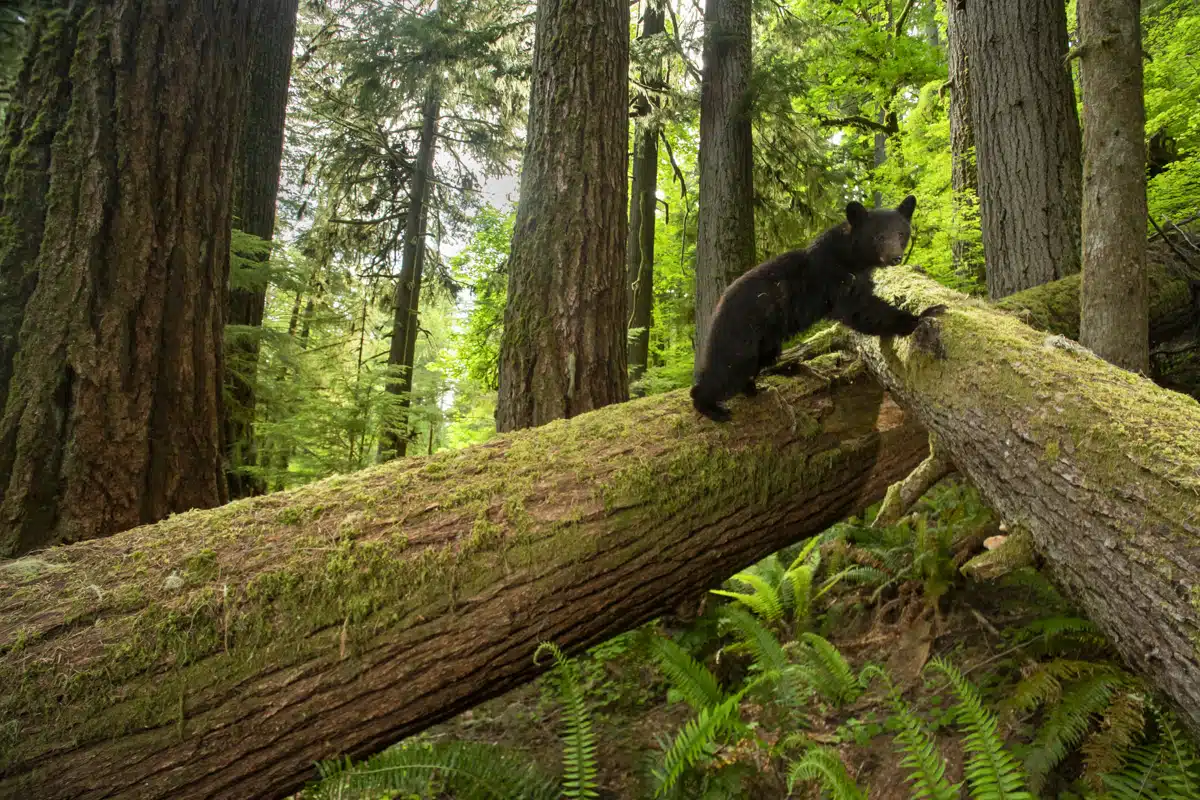
Navigating a maze of giant Douglas firs, a large black bear explores its home in one of the last old-growth stands left in Oregon’s Coast Range. These towering trees provide important habitat for bears, who use tree cavities as denning sites for their young and for hibernation. (Photo: © David Herasimtschuk)
These immaculate nests also attract other species of minnows looking for clean gravel to lay their eggs in.
I was struck by the incredible diversity they harbor, including nearly half of the world’s fish species.
A group of ancient Western Hemlocks and Sitka Spruce in an old-growth forest in Oregons Coast Range.
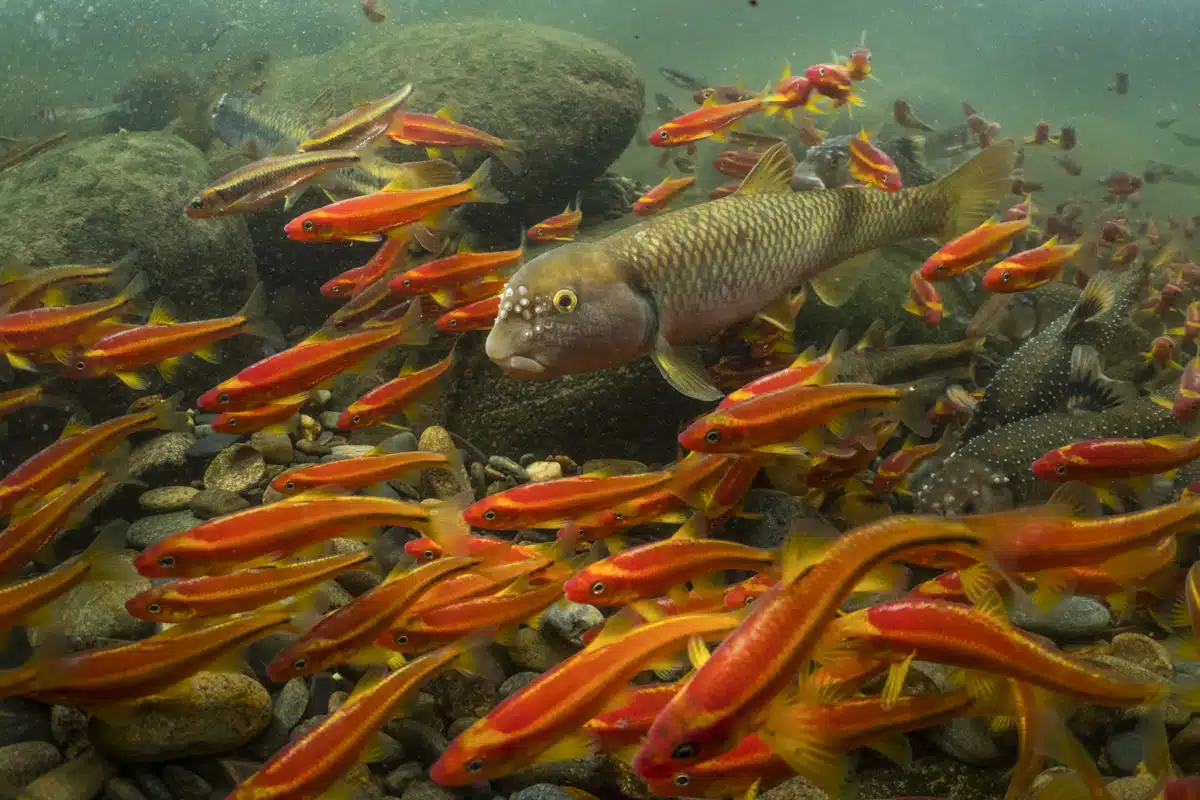
A pulsating blaze of breeding saffron and Tennessee shiners engulf a male river chub as he tirelessly works to build his rock nest. One of the most unique fish found in the Southern Appalachian Mountains, the craftsman-like river chub will pick up stones and carry them in his mouth, building a large gravel nest where female chubs will come to lay their eggs. These immaculate nests also attract other species of minnows looking for clean gravel to lay their eggs in. Many species, like saffron and Tennessee shiners, rely heavily on the chub’s nest building skills, taking advantage of these gravel nurseries for their young. The Southeastern US is not a place people often think of as having great diversity yet, some of the most biologically diverse rivers in the world can be found in Southern Appalachia. (Photo: © David Herasimtschuk / Freshwaters Illustrated)
(Photo: David Herasimtschuk)
What inspires you about the forest of the Pacific Northwest?
There is a sense of awe and magic in old-growth forests that is difficult to articulate.
Yet, over the last 50 years, the reality is that such experiences have become increasingly rare.
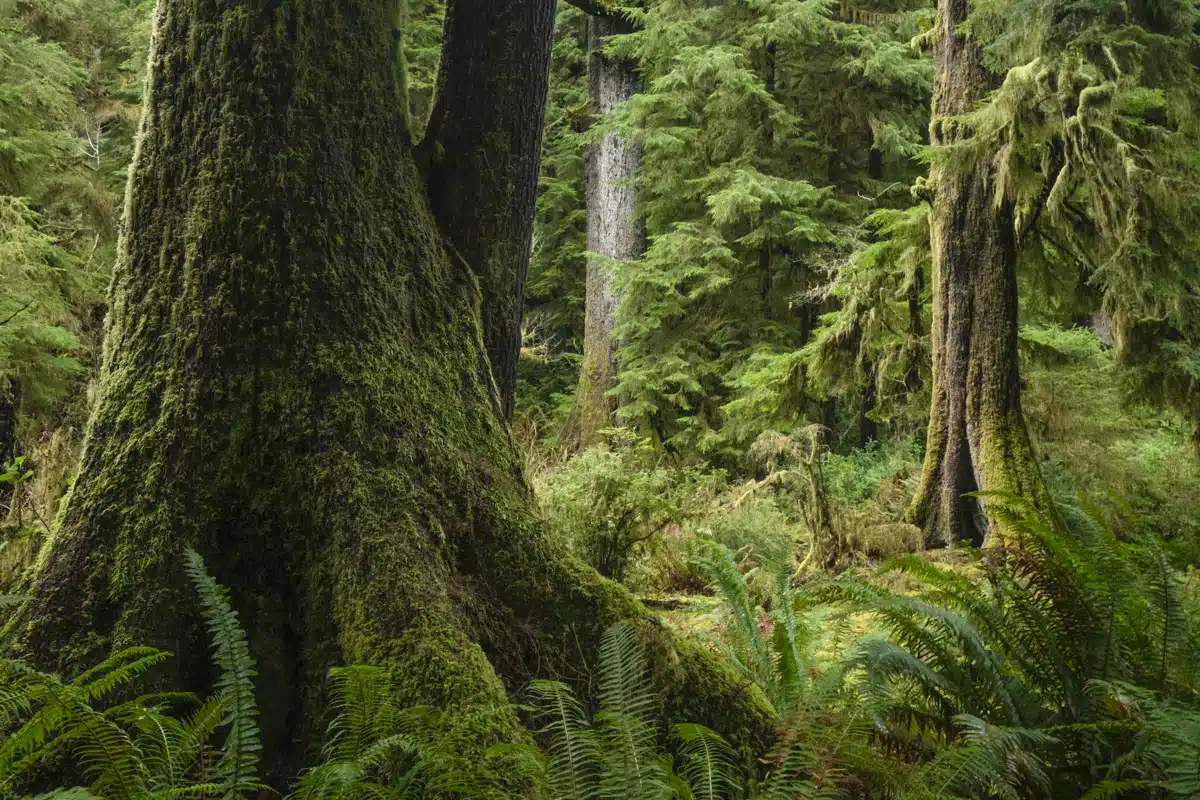
A group of ancient Western Hemlocks and Sitka Spruce in an old-growth forest in Oregon’s Coast Range. Hemlock/Sitka Spruce stands sequester and store large amounts of carbon due to their fast growth rates and because of the wet climate they inhabit. (Photo: © David Herasimtschuk)
A male coho salmon migrates to its spawning waters in a small creek in Oregons Coast Range.
(Photo: David Herasimtschuk / Freshwaters Illustrated)
What is one of your most memorable wildlife encounters there?
For me, there are few experiences more memorable than spending time in the water with salmon.
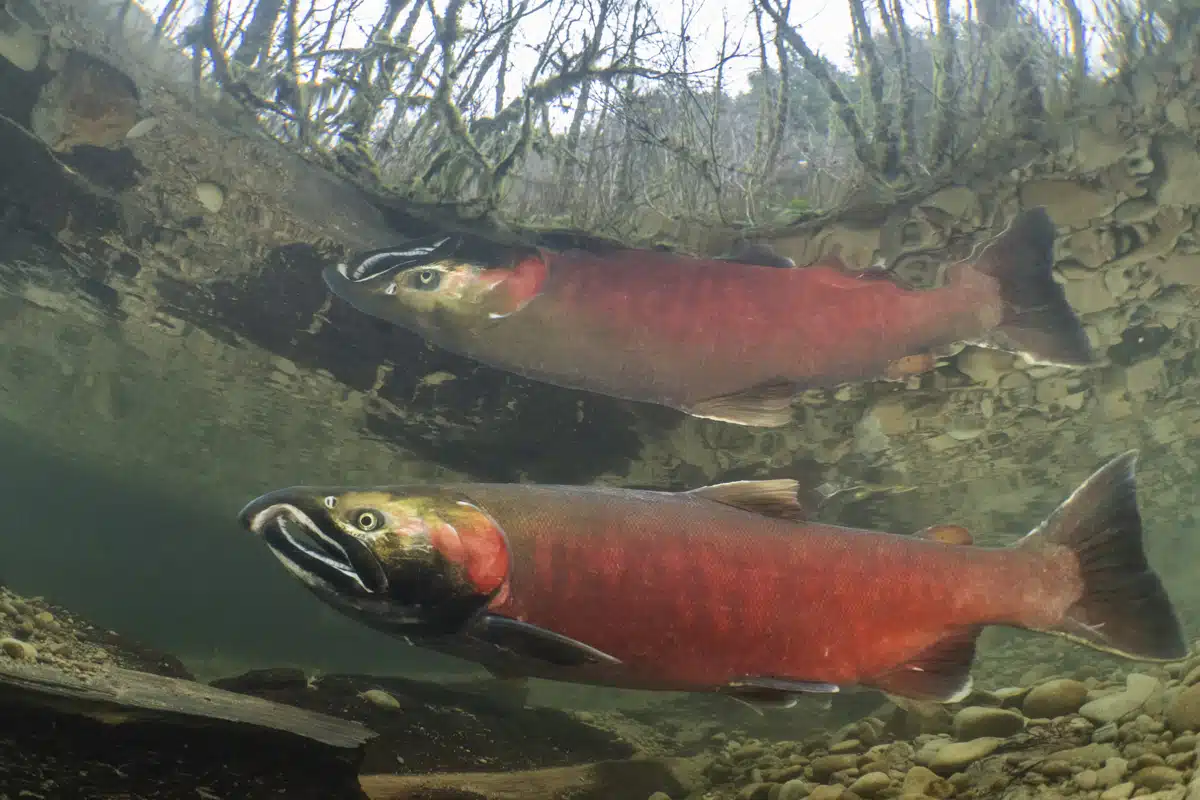
A male coho salmon migrates to its spawning waters in a small creek in Oregon’s Coast Range. Over a century of commercial logging has removed most of the old-growth trees from the region, resulting in riparian forests that are made up of much smaller trees. This lack larger trees has had a major impact on forest and river ecosystems in the Northwest, and remains as a major factor limiting in the conservation of federally protected fish, like coho salmon. (Photo: © David Herasimtschuk / Freshwaters Illustrated)
This includes impacts on all the species that rely on the marine-derived nutrients that salmon bring back.
These dramatic reductions in nutrients are also believed to impact carbon sequestration.
A young black-tailed deer blends in among a pair of decomposing Douglas Fir snags in Oregons Coast Range.
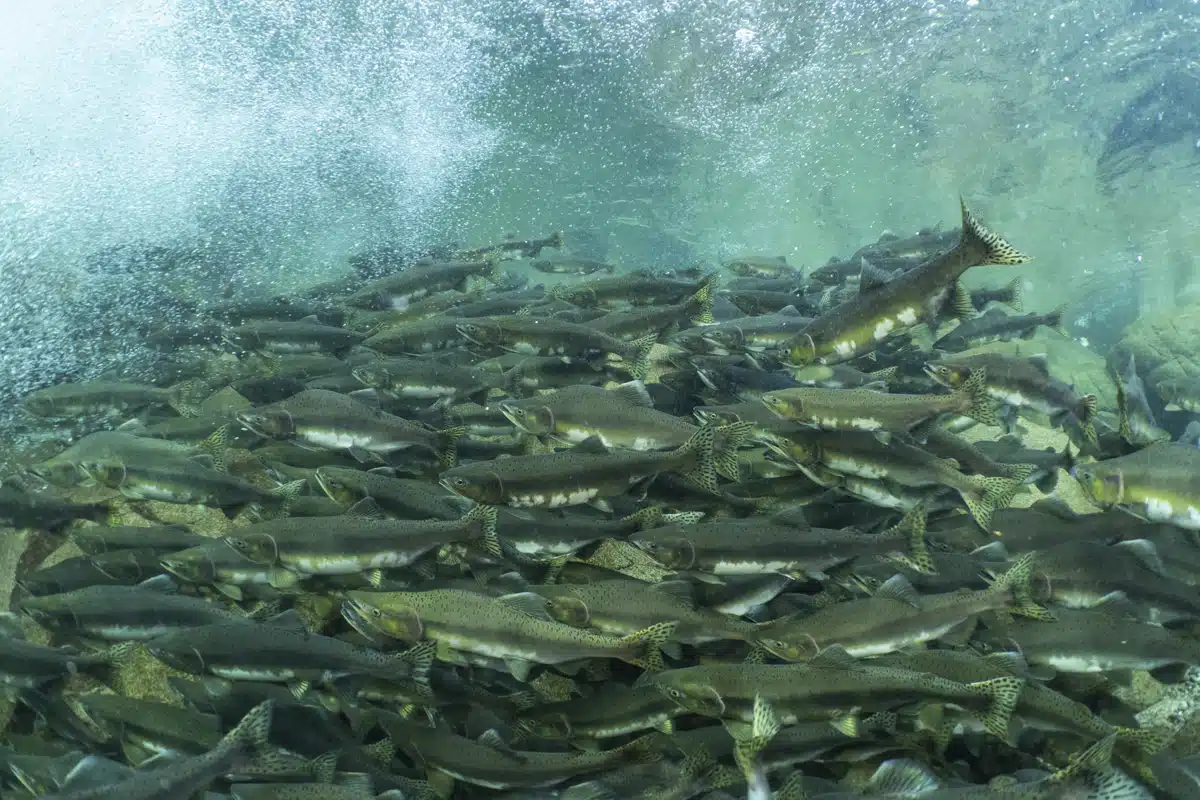
A large group of adult pink salmon stage in a pool as they wait for rains to raise water levels so they can continue migrating to their spawning grounds. In the Pacific Northwest sights like this are becoming increasingly rare as wild salmon numbers have declined by nearly 90 percent in the region. (Photo: © David Herasimtschuk / Freshwaters)
Furthermore, logging poses a direct threat to both water quality and quantity for ecosystems and local communities.
Recent research has also shown that industrial logging practices can impact water quantity.
This reduction in water can have a major impact on both forest ecosystems and municipal water supply.

A young black-tailed deer blends in among a pair of decomposing Douglas Fir snags in Oregon’s Coast Range. Providing critical habitat for over one hundred species, snags help create nesting, shelter and foraging locations, and are an incredibly important component to healthy old-growth ecosystems. (Photo: © David Herasimtschuk)
A clear cut forest in Oregons Coast Range.
Compounding these challenges, climate change itself intensifies the threats facing forest and freshwater ecosystems.
A Western red-backed salamander navigates the understory leaf litter in a mature forest in Oregons Coast Range.
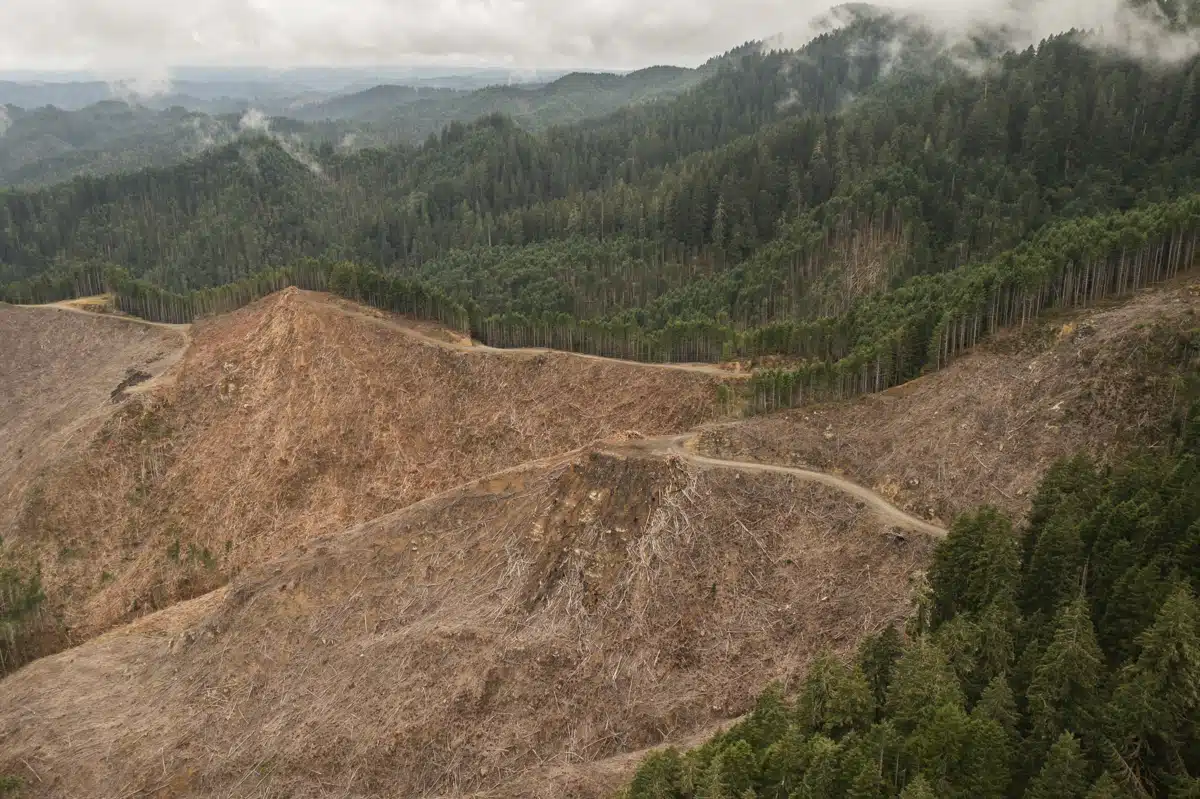
A clear cut forest in Oregon’s Coast Range. Research has found that industrial logging and wood products account for the largest source of carbon dioxide emissions in the state of Oregon. (Photo: © David Herasimtschuk)
(Photo: David Herasimtschuk / Freshwaters Illustrated)
What are your favorite hidden gems found in this environment?
In a realm of giants, the role of some of the smaller organisms can’t go unstated.
Among the small yet mighty are one of my favorite groups of creatures, the salamanders.
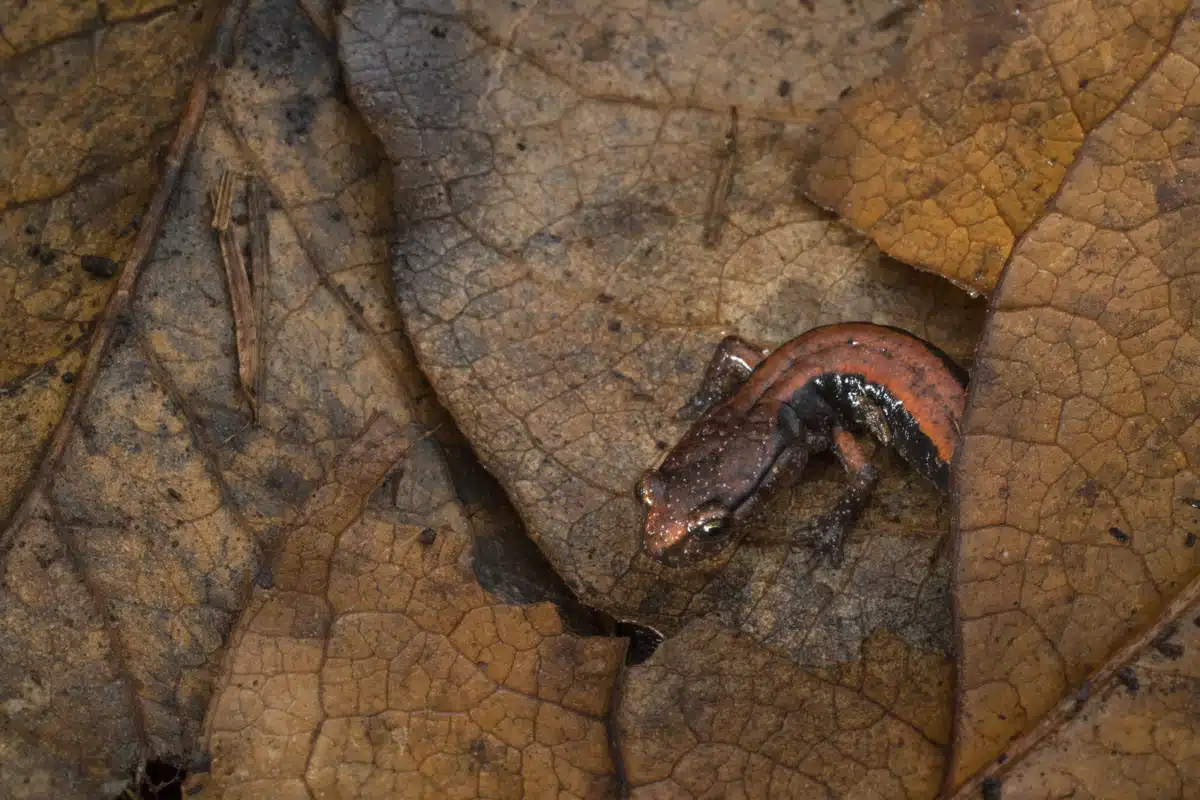
A Western red-backed salamander navigates the understory leaf litter in a mature forest in Oregon’s Coast Range. Researchers in the Northwest have found that woodland salamanders actually play an important role in carbon storage by feeding on invertebrates that release carbon. (Photo: © David Herasimtschuk / Freshwaters Illustrated)
Due to the cryptic nature of salamanders, their true importance within an ecosystem often remains hidden from view.
The interactions between salamanders, invertebrates, and the forest environment illustrate the intricate connections within ecosystems.
So often the questions are asked: what is the value of biodiversity?
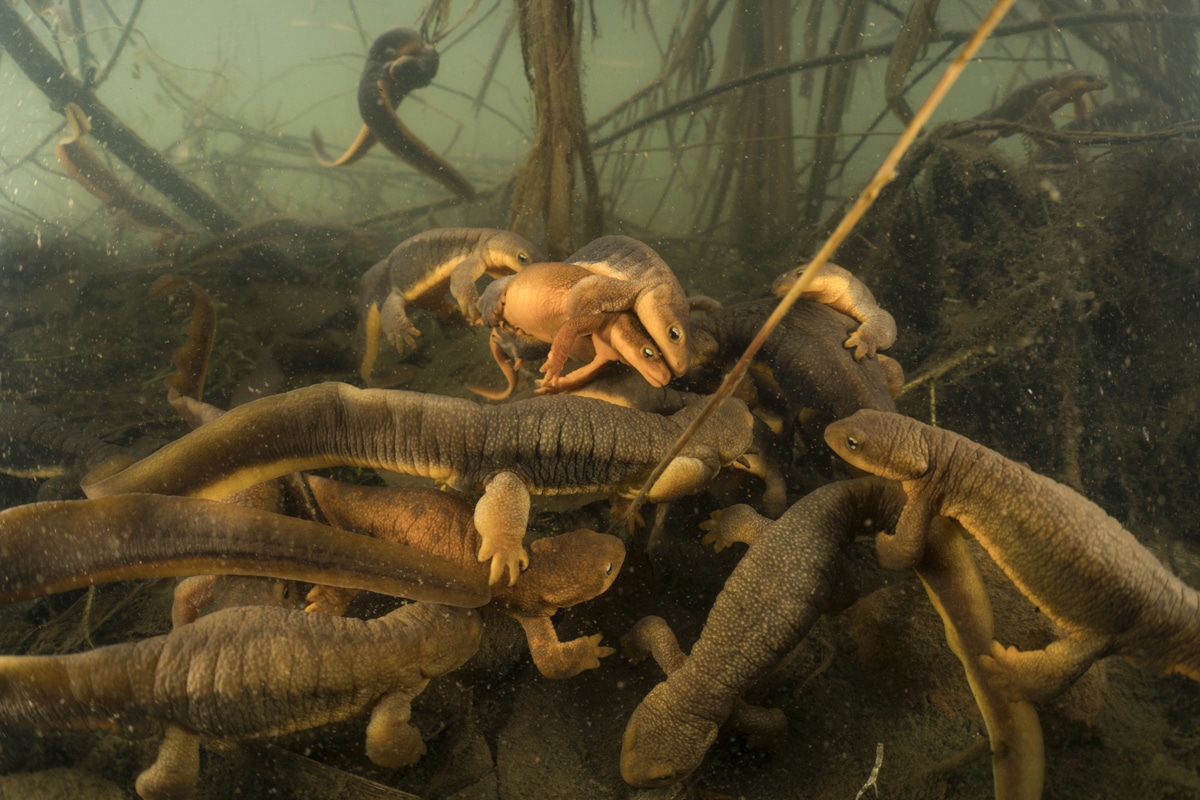
A group of rough-skinned newts interact with a breeding pair of newts in a small pond in Oregon’s Coast Range Mountains. (Photo: © David Herasimtschuk / Freshwaters Illustrated)
Or what is the value of a forest?
Understanding the importance of biodiversity and how forests function is a critical part in creating that connection.